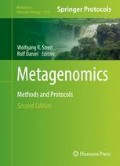Abstract
Quorum sensing (QS)-based signaling is a widespread pathway used by bacteria for the regulation of functions involved in their relation to the environment or their host. QS relies upon the production, accumulation and perception of small diffusable molecules by the bacterial population, hence linking high gene expression with high cell population densities. Among the different QS signal molecules, an important class of signal molecules is the N-acyl homoserine lactone (N-AHSL). In pathogens such as Erwinia or Pseudomonas, N-AHSL based QS is crucial to overcome the host defenses and ensure a successful infection. Interfering with QS-regulation allows the algae Delisea pulcra to avoid surface colonization by bacteria. Thus, interfering the QS-regulation of pathogenic bacteria is a promising antibiotic-free antibacterial therapeutic strategy. To date, two N-AHSL lactonases and one amidohydrolase families of N-ASHL degradation enzymes have been characterized and have proven to be efficient in vitro to control N-AHSL-based QS-regulated functions in pathogens. In this chapter, we provide methods to screen individual clones or bacterial strains as well as pool of clones for genomic and metagenomic libraries, that can be used to identify strains or clones carrying N-ASHL degradation enzymes.
Access this chapter
Tax calculation will be finalised at checkout
Purchases are for personal use only
References
Winans SC, Bassler BL (2002) Mob psychology. J Bacteriol 184:873–883
Reading NC, Sperandio V (2006) Quorum sensing: the many languages of bacteria. FEMS Microbiol Lett 254:1–11
Hassett DJ, Ma JF, Elkins JG, McDermott TR, Ochsner UA, West SE et al (1999) Quorum sensing in Pseudomonas aeruginosa controls expression of catalase and superoxide dismutase genes and mediates biofilm susceptibility to hydrogen peroxide. Mol Microbiol 34:1082–1093
Beck von Bodman S, Farrand SK (1995) Capsular polysaccharide biosynthesis and pathogenicity in Erwinia stewartii require induction by an N-acylhomoserine lactone autoinducer. J Bacteriol 177:5000–5008
Rasmussen TB, Givskov M (2006) Quorum sensing inhibitors: a bargain of effects. Microbiology 152:895–904
Uroz S, Dessaux Y, Oger P (2009) Quorum sensing and quorum quenching: the yin and yang of bacterial communication. Chembiochem 10:205–216
Dong YH, Xu JL, Li XZ, Zhang LH (2000) AiiA, an enzyme that inactivates the acylhomoserine lactone quorum- sensing signal and attenuates the virulence of Erwinia carotovora. Proc Natl Acad Sci U S A 97:3526–3531
Tannières M, Beury-Cirou A, Vigouroux A, Mondy S, Pellissier F, Dessaux Y et al (2013) A metagenomic study highlights phylogenetic proximity of quorum-quenching and xenobiotic-degrading amidases of the AS-family. PLoS One 8:e65473
Riaz K, Elmerich C, Moreira D, Raffoux A, Dessaux Y, Faure D (2008) A metagenomic analysis of soil bacteria extends the diversity of quorum‐quenching lactonases. Environ Microbiol 10:560–570
Tang K, Zhang XH (2014) Quorum quenching agents: resources for antivirulence therapy. Mar Drugs 12:3245–3282
Yang F, Wang LH, Wang J, Dong YH, Hu JY, Zhang LH (2005) Quorum quenching enzyme activity is widely conserved in the sera of mammalian species. FEBS Lett 579:3713–3717
Uroz S, Oger P, Chapelle E, Adeline M-T, Faure D, Dessaux Y (2008) A Rhodococcus qsdA-encoded enzyme defines a novel class of large-spectrum quorum-quenching lactonases. Appl Environ Microbiol 74:1357–1366
Lin YH, Xu JL, Hu J, Wang LH, Ong SL, Leadbetter JR et al (2003) Acyl-homoserine lactone acylase from Ralstonia strain XJ12B represents a novel and potent class of quorum-quenching enzymes. Mol Microbiol 47:849–860
Luo ZQ, Su S, Farrand SK (2003) In situ activation of the quorum-sensing transcription factor TraR by cognate and noncognate acyl-homoserine lactone ligands: kinetics and consequences. J Bacteriol 185:5665–5672
McClean KH, Winson MK, Fish L, Taylor A, Chhabra SR, Camara M et al (1997) Quorum sensing and Chromobacterium violaceum: exploitation of violacein production and inhibition for the detection of N-acylhomoserine lactones. Microbiology 143:3703–3711
Reimmann C, Ginet N, Michel L, Keel C, Michaux P, Krishnapillai V et al (2002) Genetically programmed autoinducer destruction reduces virulence gene expression and swarming motility in Pseudomonas aeruginosa PAO1. Microbiology 148:923–932
Uroz S, Chhabra SR, Càmara M, Wiliams P, Oger PM, Dessaux Y (2005) N-Acylhomoserine lactone quorum-sensing molecules are modified and degraded by Rhodococcus erythropolis W2 by both amidolytic and novel oxidoreductase activities. Microbiology 151:3313–3322
Yates EA, Philipp B, Buckley C, Atkinson S, Chhabra SR, Sockett RE et al (2002) N-acylhomoserine lactones undergo lactonolysis in a pH-, temperature-, and acyl chain length-dependent manner during growth of Yersinia pseudotuberculosis and Pseudomonas aeruginosa. Infect Immun 70:5635–5646
Shaw PD, Ping G, Daly SL, Cha C, Cronan JE Jr, Rinehart KL et al (1997) Detecting and characterizing N-acyl-homoserine lactone signal molecules by thin-layer chromatography. Proc Natl Acad Sci U S A 94:6036–6041
Winson MK, Swift S, Fish L, Throup JP, Jorgensen F, Chhabra SR et al (1998) Construction and analysis of luxCDABE-based plasmid sensors for investigating N-acyl homoserine lactone-mediated quorum sensing. FEMS Microbiol Lett 163:185–192
Author information
Authors and Affiliations
Corresponding author
Editor information
Editors and Affiliations
Rights and permissions
Copyright information
© 2017 Springer Science+Business Media LLC
About this protocol
Cite this protocol
Uroz, S., Oger, P.M. (2017). Screening for N-AHSL-Based-Signaling Interfering Enzymes. In: Streit, W., Daniel, R. (eds) Metagenomics. Methods in Molecular Biology, vol 1539. Humana Press, New York, NY. https://doi.org/10.1007/978-1-4939-6691-2_18
Download citation
DOI: https://doi.org/10.1007/978-1-4939-6691-2_18
Published:
Publisher Name: Humana Press, New York, NY
Print ISBN: 978-1-4939-6689-9
Online ISBN: 978-1-4939-6691-2
eBook Packages: Springer Protocols

